These past couple of years, I’ve been venturing into street art, specifically large-scale murals, which is very different from my usual freelance illustration work. On an ordinary workday, I spend 100% of my time in the studio, making paintings that are of a standard size. With murals, I’m mostly outdoors painting on a massive building while being spectated by random passersby. I initially found these large-scale projects to be daunting, but over time, I’ve come to love it, and have found it’s helped rekindle my love for art-making. In this post, I’ll discuss what to expect when working on an outdoor mural, general art tips, and my overall impression of it.
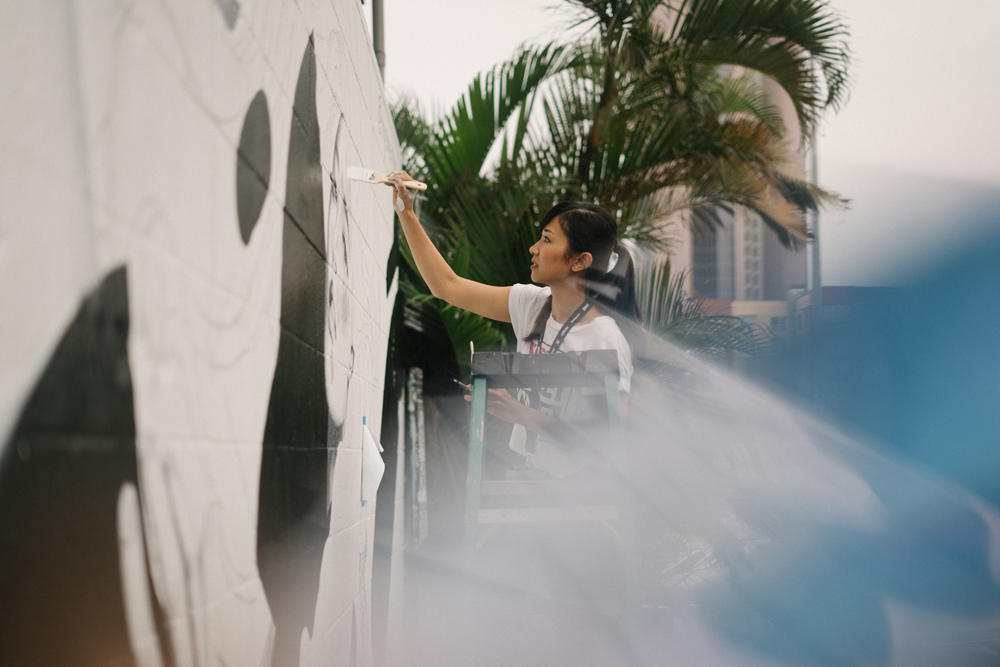 (photo by Pete Ulatan)
(photo by Pete Ulatan)
From my current experiences, the client/organization supplies most of the paints and tools you’ll need such as ladders, paint colors, mixing trays, lifts, etc. I don’t use spray paint so I opt for everyday house paint. To make sure everything is ready when artists arrive, a list of paint colors are sent to the organizer weeks in advance to maximize the work time.
My mural art-style is mainly black and white with a few accent colors here and there. I love incorporating gold into my work so I usually bring my own tubes of Golden’s iridescent gold acrylics since it’s a specialty item the organizers probably won’t have in stock. I also like to bring my own brushes, palette, projector, T-square, and any other items I deem essential/able to fit in a check-in luggage.
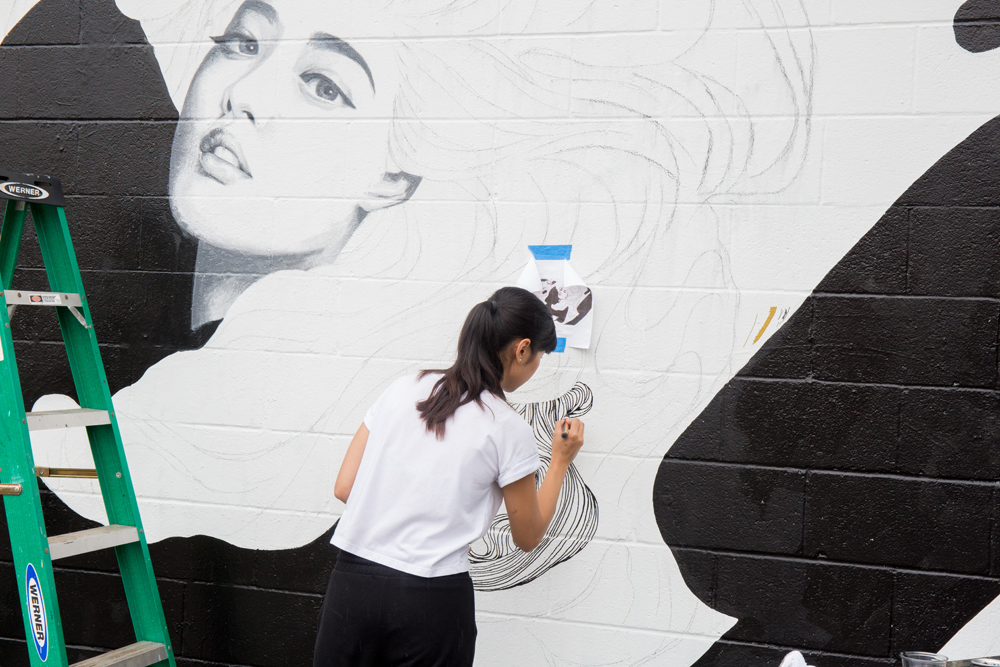
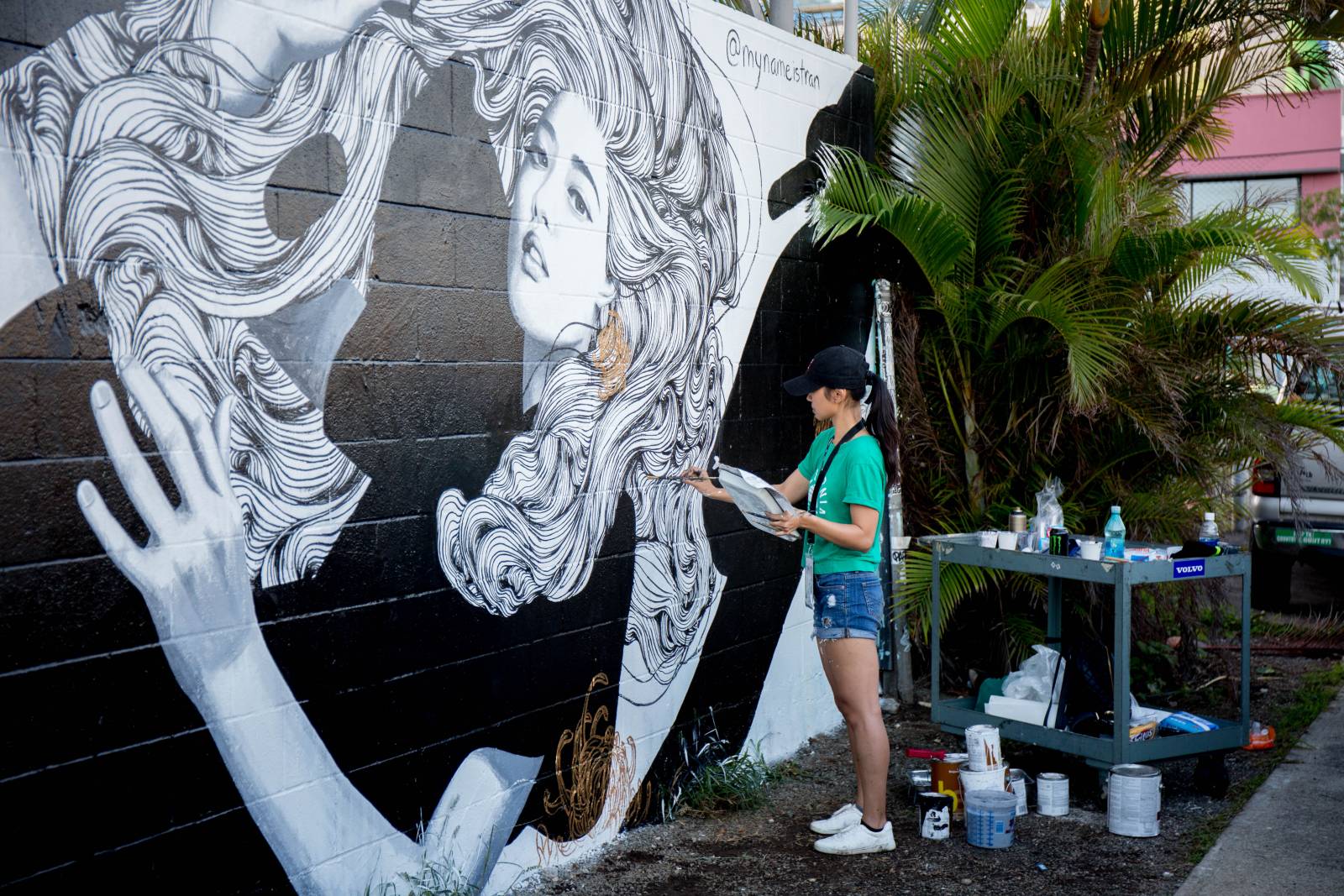
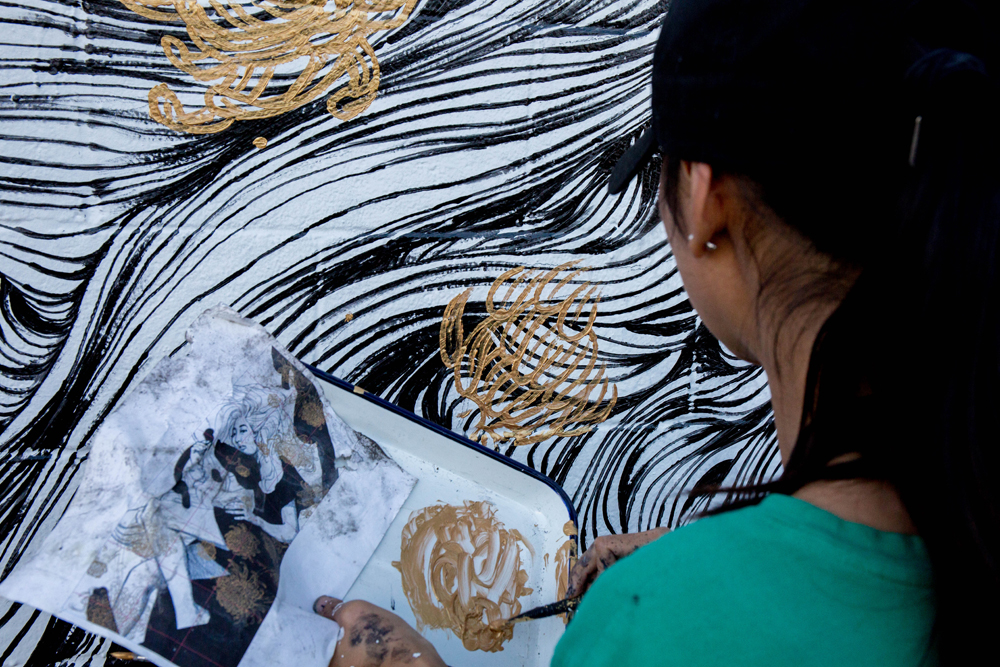
The first work night is spent projecting the sketch. I use an Epson VS330 projector which can illuminate the wall well before the sun sets. I prefer tracing my sketch with a 6B or charcoal pencil. Crayons and pastels can also be used. Using a projector can save you hours of work as oppose to using the grid method.
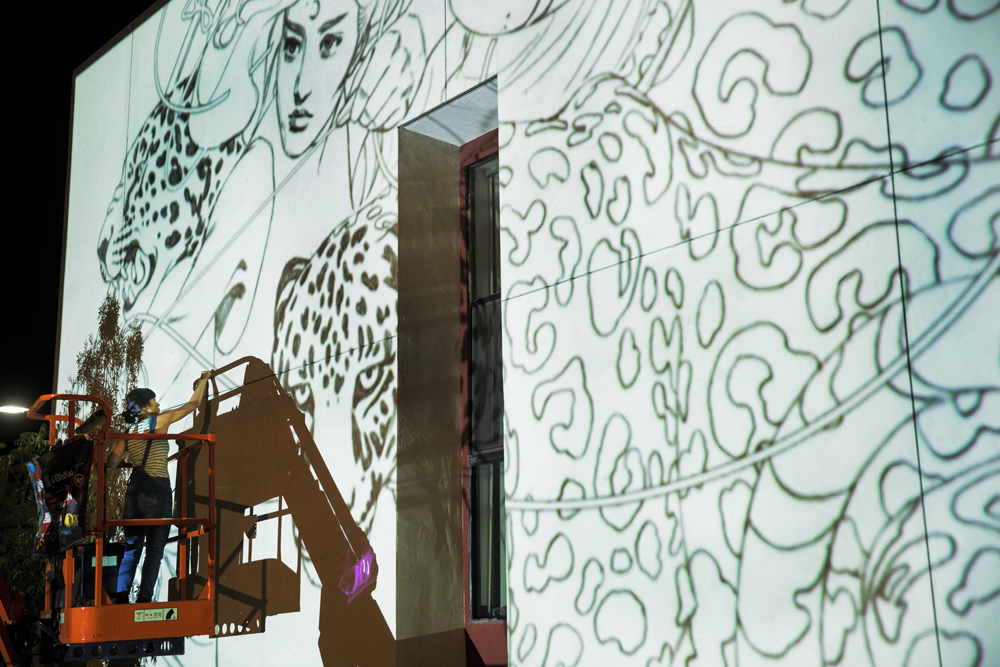
It generally takes me about 6-8 days to complete a mural, from projection to signature (be sure to leave your social media handle, too). I start working at 9am and turn in when the sun sets around 7pm. Time management is extremely important so recognize and plan out what needs to be completed each day you’re there. Better off starting with broad strokes with a large paintbrush or roller, filling in the major areas rather than fine details. Stray strokes and mistakes tend to disappear when you step back from the mural so I don’t pay too much attention to them.






Every project is different so you need to learn to be flexible and adapt. Walls don’t always match the dimensions you’re given, surface textures tend to be rough and inconsistent, the paint colors supplied to you aren’t exact and so on. Unlike working in a studio where you have control over the temperature and your materials, there’s no telling what could go wrong.
The murals that I’ve done so far have required traveling — since I have to fly to the location, my personal art tools are limited to one checked luggage. When I painted in China, it rained 6 out of the 9 days (unbeknownst to me, it was monsoon season) so I worked under a makeshift tarp canopy. Though the weather wasn’t in my favor, the wall was spectacularly smooth. The client prepped it with a substrate that was similar to hot press paper so the paint applied beautifully. The wall I did in Hawai’i was extra porous so the paint that I was used to wouldn’t stick properly. It was also scorching hot on the island so I was only able to work before 11am and after 3pm. In California, the wall was elevated several feet high so I had to paint while learning to operate a boom lift.
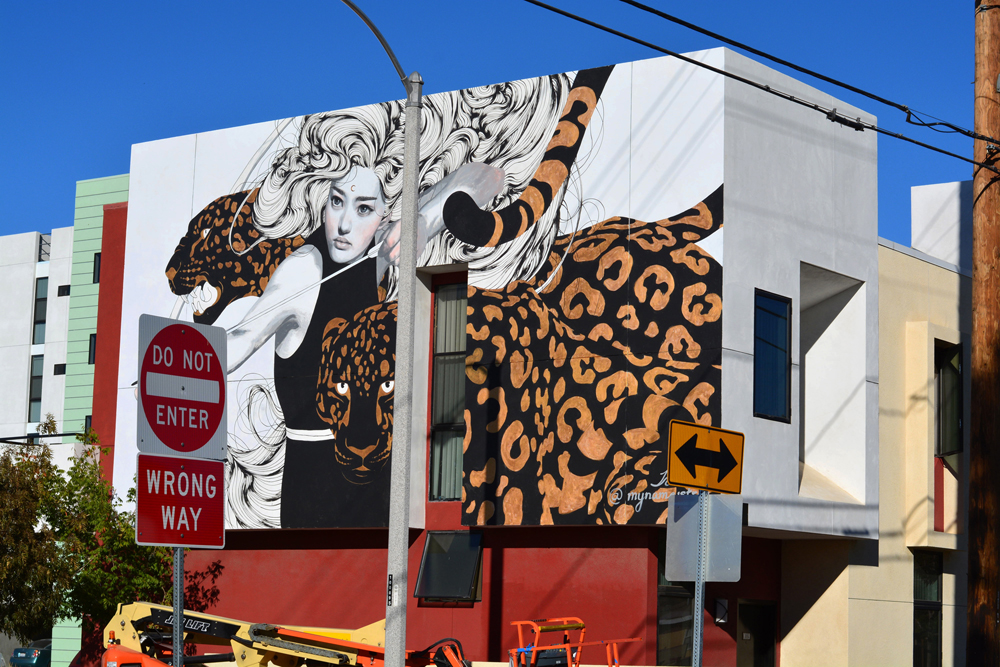


What I most treasure about painting murals is the human connection and sense of community I received from the locals. You’ll feel like you’re part of an art installation. Locals often come by to watch, chat about art, and shower you with compliments and critiques alike. Other than conventions, I don’t get to see people’s immediate reactions to my work. It’s wonderful, encouraging, scary and fulfilling, all at the same time.


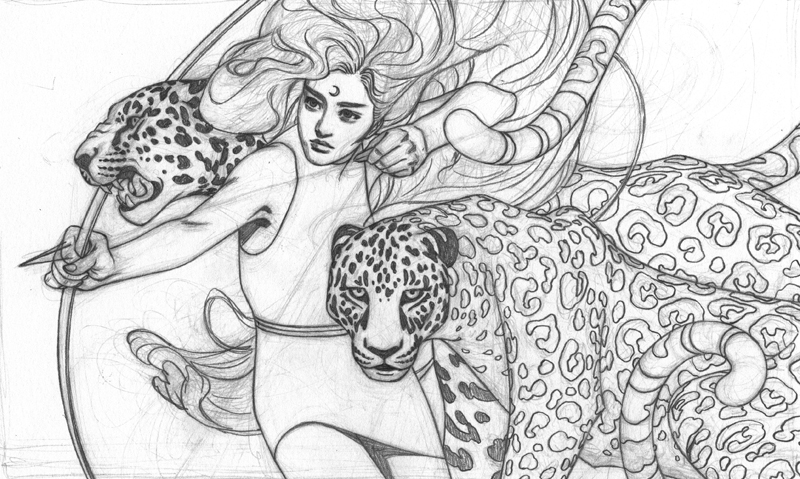
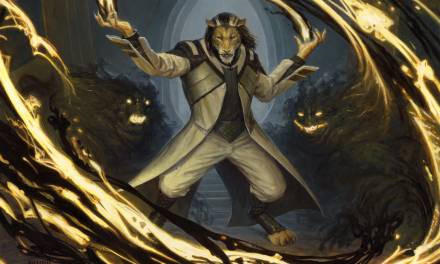
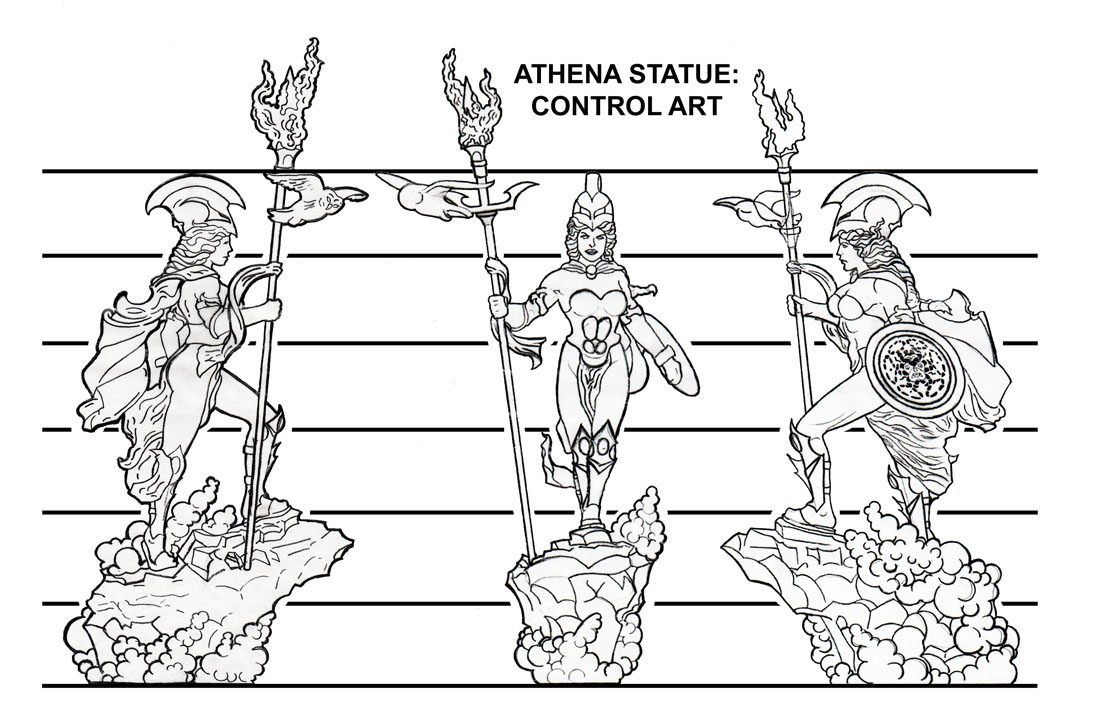

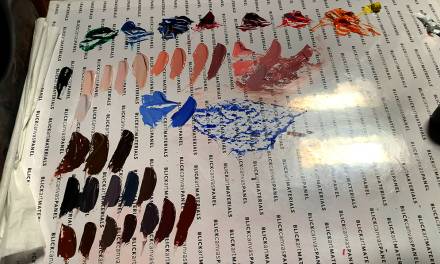
Beautiful and inspiring! You r a machine- Thank you for sharing!
STUNNING! absolutely incredible stuff!
Thats awesome! Wonder how much that pays!
Thank you for stating that when painting a mural, you need to learn to be flexible and adapt. My husband loves art and wants to paint his first mural, but needs some tips. I will definitely pass along all of your great tips and information to my husband so he can successfully paint a mural.
Beautiful!
I was wandering where did you position your projector when you did the mural for the apartment building in Lancaster?
Truly amazing work and so many “a-ha” moments. I’ve seen many go up with the grid method – still mesmerizing – but the projection seems like much better approach. Thank you! BTW your final paragraph says it all… murals really do connect to the people/community in such a lasting and unique way. Hope you’re able to be a part of MURAL in Montrèal if you haven’t already. Cheers from Canada.